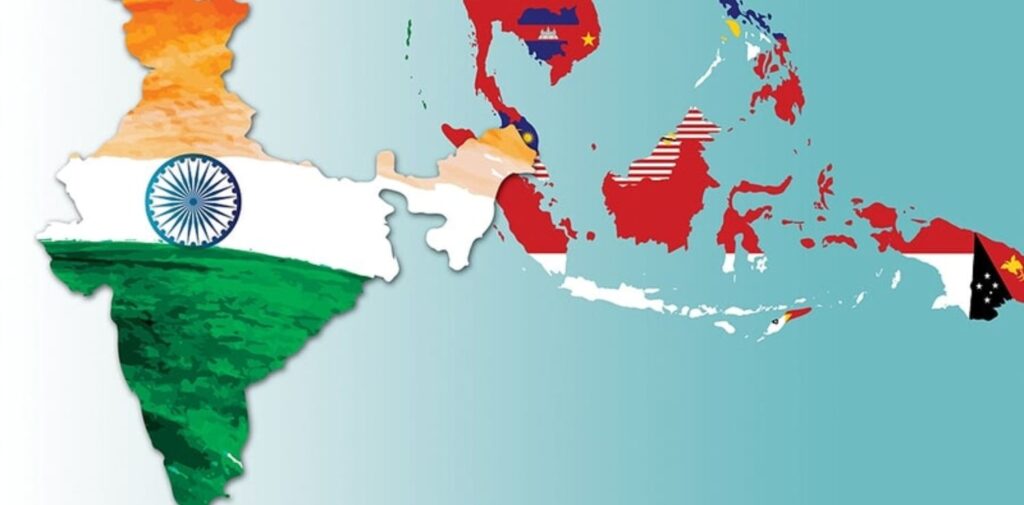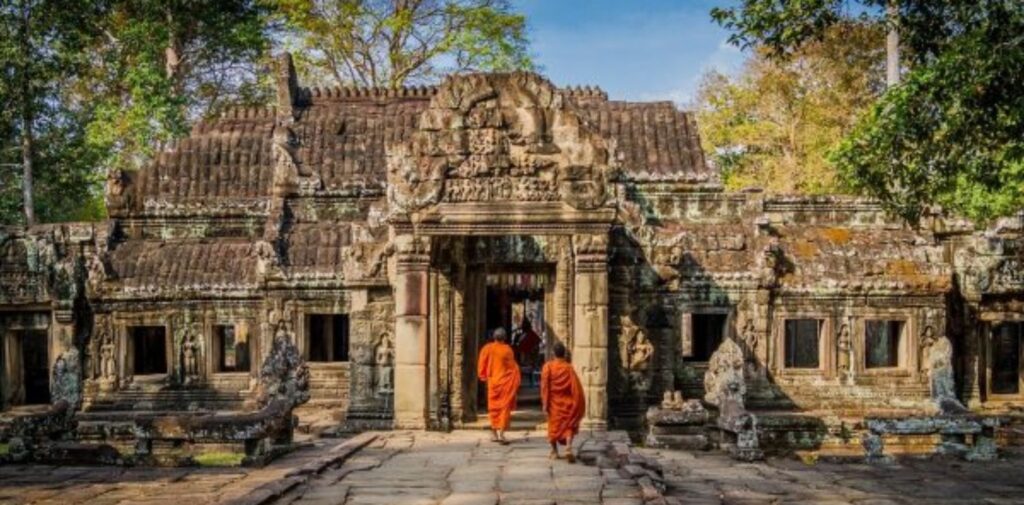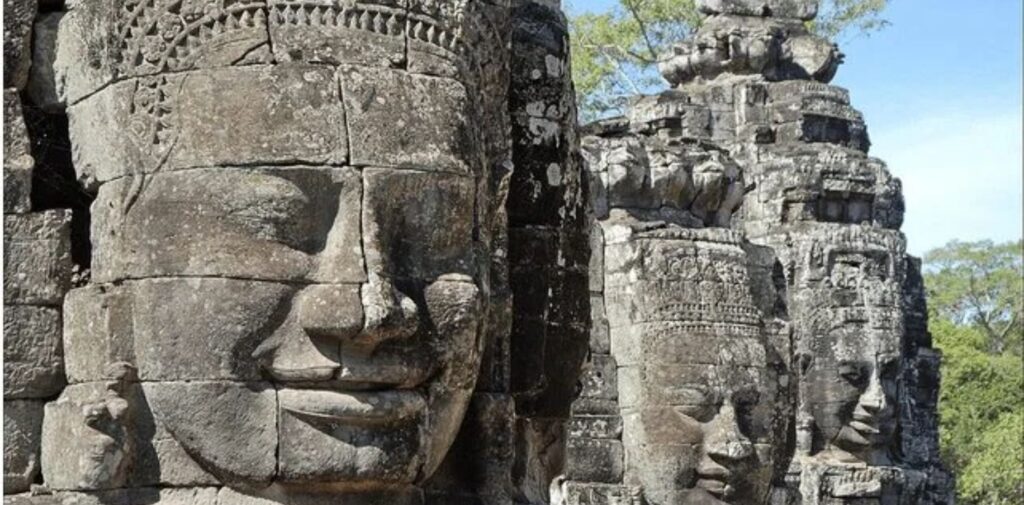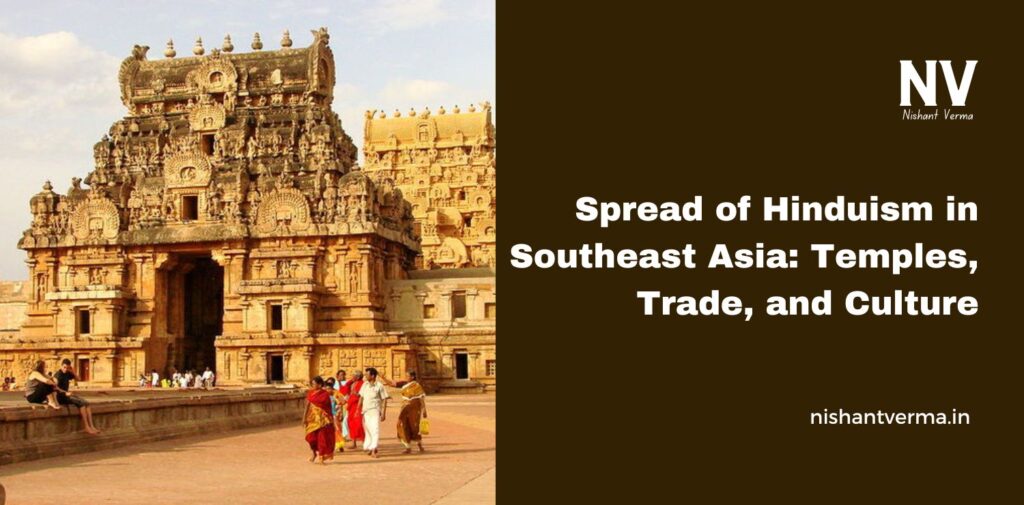Hinduism in Southeast Asia is one of the oldest religions in the world. It started in India and later spread to many parts of the world. One of the places where Hinduism made a big impact was Southeast Asia. Southeast Asia is made up of countries like Indonesia, Malaysia, Thailand, Cambodia, and Vietnam. Thousands of years ago, Indian traders, rulers, and religious leaders traveled to these places, bringing with them their culture, ideas, and beliefs. This is how Hinduism found its way to Southeast Asia.
The Early Connection Between India and Southeast Asia
Many, many years ago, India and Southeast Asia were not as far apart as they seem today. In ancient times, there were no airplanes or cars, but people traveled by ships and by foot. India had a rich culture and a powerful civilization. The Indian Ocean, which lies between India and Southeast Asia, was an important route for traders. Merchants from India sailed across the sea, carrying spices, silk, and other goods. But they didn’t just bring material things; they also brought ideas, art, and religion.

The Role of Trade in Spreading Hinduism
Trade played a big role in spreading Hinduism to Southeast Asia. Indian merchants sailed to Southeast Asian ports, exchanging goods and ideas with local people. As they traded, they also shared stories, beliefs, and customs. The merchants told people about the Hindu gods like Vishnu, Shiva, and Brahma. They also spoke about the Hindu way of life, which included concepts like dharma (duty) and karma (actions and their consequences).
People in Southeast Asia started to get interested in the Hindu religion. Many kings and rulers in these countries saw the benefits of Hinduism. They thought that following Hindu beliefs would help them rule better and bring peace and prosperity to their kingdoms. As a result, many Southeast Asian kings adopted Hinduism, and it became the state religion in many places.
Indian Kings and Hindu Temples
Kings in Southeast Asia wanted to show their power and devotion to Hinduism. So, they built grand temples to honor the Hindu gods. These temples were not only places of worship but also centers of learning, art, and culture. The temples became symbols of the king’s power and their devotion to the gods.
One famous example is the Angkor Wat temple in Cambodia. It was built in the 12th century by King Suryavarman II. The temple is dedicated to the Hindu god Vishnu. Angkor Wat is one of the largest and most impressive temples in the world. It shows how powerful and rich the Hindu culture was in Southeast Asia at the time. Another example is the Prambanan Temple in Indonesia, which is dedicated to the gods Shiva, Vishnu, and Brahma. These temples are not just religious sites; they are masterpieces of architecture and art, showing the deep influence of Hinduism.
Hindu Influence on Art and Culture
Apart from religion, Hinduism also influenced the art, literature, and culture of Southeast Asia. Hindu myths and stories, such as the Ramayana and the Mahabharata, were told and retold in these countries. These stories were often performed as dances, plays, and puppet shows. In many Southeast Asian countries, traditional dance and theatre are still based on these ancient Hindu stories. For example, the famous Ramayana Ballet in Indonesia is a performance that tells the story of Rama and Sita, two characters from the Ramayana.
Hindu art also influenced the sculpture and painting styles in Southeast Asia. The temples and statues of Hindu gods in countries like Cambodia, Indonesia, and Thailand show the Indian influence. These artworks often depict gods, goddesses, and scenes from Hindu myths. The intricate carvings on temple walls tell stories from Hindu epics, bringing them to life in stone and wood.

The Hindu-Buddhist Blend in Southeast Asia
Although Hinduism was very important in Southeast Asia, another religion, Buddhism, also spread in the region around the same time. In many Southeast Asian countries, Hinduism and Buddhism blended together. In places like Cambodia, Thailand, and Indonesia, it became common for people to practice a mixture of both religions.
For example, the famous Angkor Wat temple, while originally dedicated to the Hindu god Vishnu, later became a Buddhist temple. This shows how Hinduism and Buddhism influenced each other in the region. Hindu gods and stories were often adopted into Buddhist teachings, and many Hindu rituals were combined with Buddhist practices. This blending of religions created a unique cultural and religious landscape in Southeast Asia.
The Decline of Hinduism in Southeast Asia
Hinduism was very powerful in Southeast Asia for many centuries, but over time, other religions like Buddhism and Islam became more popular in the region. The spread of Islam, in particular, had a big impact. By the 15th and 16th centuries, many Southeast Asian countries started to adopt Islam as their main religion. This was the end of Hinduism’s golden age in the region.
However, Hinduism never completely disappeared. Even today, there are still traces of Hindu culture in Southeast Asia. In Bali (an island in Indonesia), Hinduism is still the main religion, and the people there continue to follow many Hindu traditions. In other countries, like Cambodia and Thailand, Hindu temples and artwork can still be seen, reminding us of the rich Hindu heritage of the region.

The Legacy of Hinduism in Southeast Asia
The spread of Hinduism in Southeast Asia left a lasting legacy. The temples, art, literature, and traditions that were influenced by Hinduism continue to be an important part of the region’s culture. Even though many Southeast Asian countries are now mostly Buddhist or Muslim, the influence of Hinduism can still be seen in their festivals, dances, and even in the way people think about the world.
In India, Hinduism continues to be a major part of daily life, and many Indians are proud of how their religion and culture spread to other parts of the world. The story of Hinduism’s spread to Southeast Asia shows how cultures can influence each other and how religions can travel far from their place of origin, leaving behind a rich and lasting impact.
Conclusion
Hinduism’s spread to Southeast Asia is a beautiful example of how trade, culture, and religion can connect distant parts of the world. Through the power of Indian traders, kings, temples, and art, Hinduism became an important part of Southeast Asian culture for many centuries. While Hinduism may not be as dominant in the region today, its influence is still felt through the grand temples, art, and traditions that remain. This story is a reminder that the world is connected in many ways, and the ideas, beliefs, and cultures of one place can touch and shape others far away.




